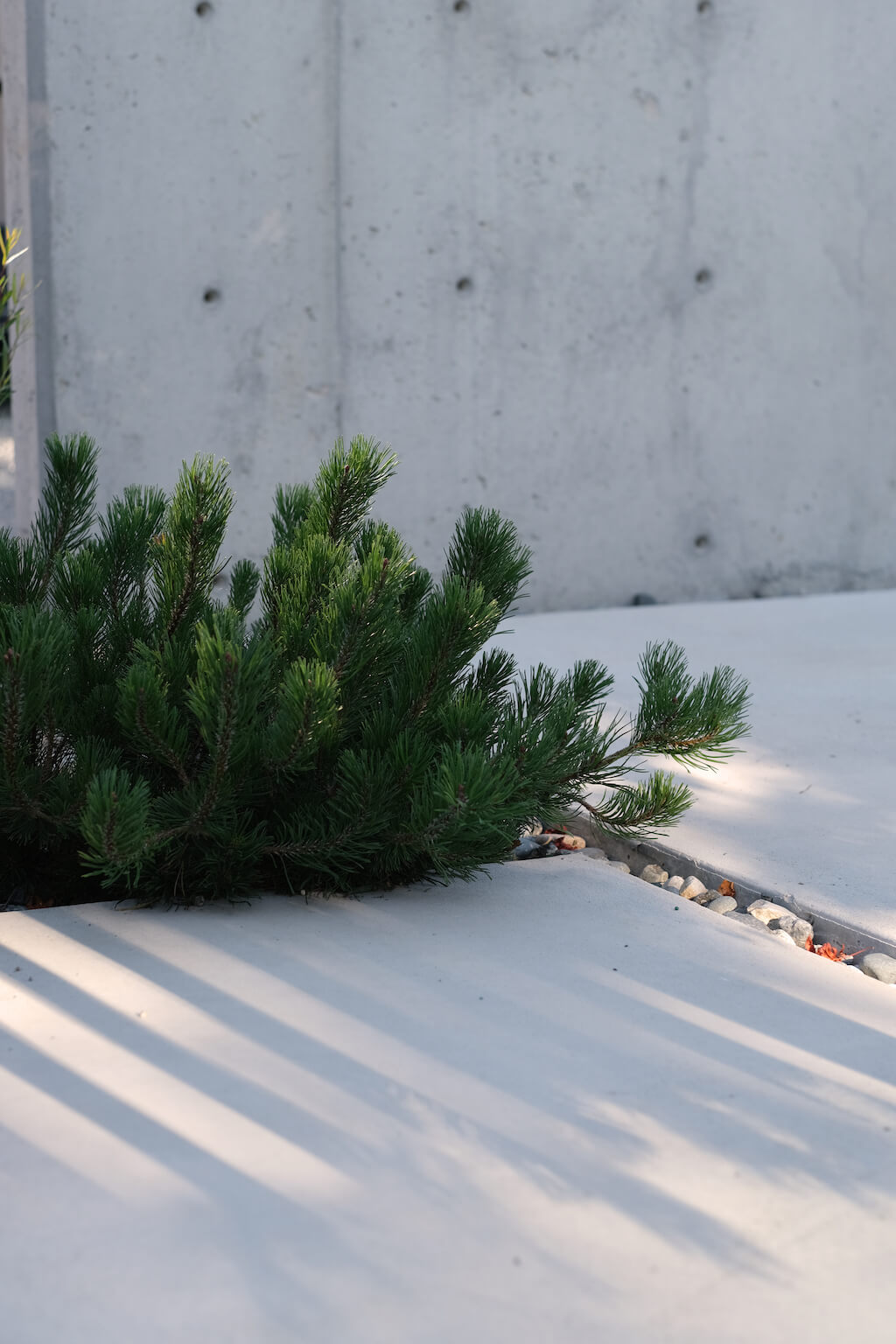Based in British Columbia’s Salt Spring Island, landscape designer Alexander Suvajac creates outdoor spaces that help us slow down, reconnect, and tune into a sense of place. The landscapes he creates feel peaceful, restorative, and distinctly considered — with every plant, stone, and material coming together to create a cohesive whole.
With spring now in full bloom, we were excited to speak with Alexander and hear his insights into garden design, how to create meaningful outdoor spaces, and how gardens can help us be more in the present moment.


Photo Credit Left: Pooya Nabei, Photo Credit Right: Alexander Suvajac
What would you say is your first step in designing a garden?
When looking to cultivate a garden, one of my first steps and goals is to create a sense of an atmosphere. This starts with tuning into your own intention of what you want. Then, with any given project, the context the garden sits in is a repository of information—the landscape, the architecture, and the client’s lifestyle and needs. With those together, we start to formulate an approach for a space.
Then, I’d look at what is impeding that atmosphere now. It could be a telephone pole, a neighbour’s house, or simply some old things in the yard that you just don’t like looking at. Targeting some of those problem areas is a quick way to get a net positive on your overall design. From there, it’s my job as a designer to find the anatomy of a space, and layer onto what’s working and what’s already there.

How do you bring different materials into outdoor spaces?
I see material as an extension of the natural world. I like the idea of taking the components of the mountains, the river, or the forest, and trying to use material to bring those into the garden. Material can be used to create a story or connection to the surrounding landscape or architecture. Those types of things can create a deeper connection with the landscape.
And once you have your palette of materials, there’s such a spectrum of what can be done in terms of the proportion, the finish, and more. Maybe there's a type of stone used in a paving that’s more refined, and then there’s a way of actually seeing it in a raw form in a boulder or something similar elsewhere in the garden. I love the idea of being able to express that material in multiple iterations.
Your landscapes aren’t overly polished—what role does imperfection have in garden design?
I’m often inspired by Japanese and Korean design in my work. There’s a thoughtfulness and awareness of the inherent beauty in what’s natural, which isn’t always cookie cutter perfect. This is instilled in their philosophy as well, such as with the Japanese concept of wabi sabi—there’s beauty in imperfect.
Not everything needs to be cut and machined perfectly, otherwise it ends up feeling cold. There are contemporary garden spaces like that, with only very clean materials. Even though all the pieces are there, it feels off and too clinical.
Unlike indoor spaces, gardens change throughout the year. How can we design landscapes with this in mind?
In gardens there’s an older trend of wanting everything to look great all the time. It’s tempting to want everything to always be evergreen and hold its shape, but it just isn’t natural.
Plants are beautiful things, and they can show beauty all year round. Some are a one season wonder—like magnolia with its big blooms in the spring. Or, there are other plants that don’t try to stand out in a crowd as much, but have something to share every season—maybe with a textured bark or interesting structure. It’s about finding a palette of plants that works for you. Thinking about colour and texture, and how they change throughout the year.
This is a trend I’m hoping to see—that we all feel more comfortable with engaging with our landscapes as they change through the year. As we’re moving towards being more interested in wellness, I think there will be less resistance to the idea of seasonality. As we’re engaged with the cycles of nature, and being in touch with the outdoors, we’re more connected to the rhythms of the planet. Also, seeing how landscapes change throughout the year gives us an inevitably heightened sense of awareness.

Photo Credit: Alexander Suvajac
Do you have a tip for appreciating our gardens and outdoor spaces?
It’s helpful to have a place where you can feel sheltered. This could be a comfortable nook to relax or read, a sauna, or something nestled in a way in the garden that puts you at ease.
Those help as a precursor to engaging the senses. Once you’re completely comfortable, it’s easier to start tapping into the natural wonders of the world. You can just reflect on the plants, maybe how they’re animated in the wind or the dew. And then there’s engaging with sound—some plants have a rustling sound like a quaking aspen, which it’s both soothing and also drowns out distracting noises. Having a comfortable nook helps us enjoy those subtleties.
This is what’s at the core of things. How can we create a deeper connection with nature? Gardens are that space to reflect, pause, and be present. And I feel like activating our senses puts us at the present moment like nothing else.




